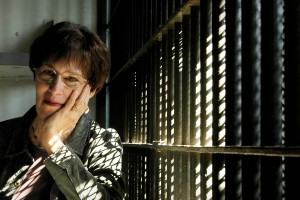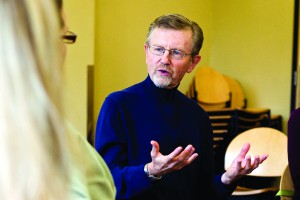Texas leads the nation in executions. Minnesota has no death penalty. So two researchers—one from the University of Minnesota and one from the University of Texas at Austin—teamed up to find out something no one had ever looked at before: what the worst possible punishment does for the murder victims’ families. They compared family survivors’ experiences in Texas with Minnesota—the latter one of 18 states whose “ultimate penal sanction” is life without the possibility of parole.
The study used in-person interviews with victims’ families to examine the death penalty and life-without-parole processes and their long-term impact on the families.
The study itself does not advocate for the death penalty or for life without parole, but it does reference a key reason often given in support of the death penalty by Americans—that, as a form of retribution, it succeeds in bringing satisfaction and closure to murder victims’ families—in other words, the belief that it helps them heal.
Among the findings: In Minnesota, victims’ family members show higher levels of physical, psychological, and behavioral health, as well as more satisfaction with the criminal justice system.
The study was led by School of Social Work alumna and former adjunct professor Marilyn Peterson Armour, ’00—now in Texas, where the research won UT’s top research award last year—and Mark Umbreit, ’88, professor and director of the Center for Restorative Justice and Peacemaking in the School of Social Work. It is the first systematic inquiry dealing directly with whether capital punishment affects the healing of homicide survivors.
Listening to survivors

Armour has been interested in homicide survivors for a long time. After earning her master’s in social work in 1968, she worked for many years as a psychotherapist in private practice with an emphasis on violent death, trauma, and family relationships. She observed many going through the legal process to bring justice to a perpetrator.
“Survivors often refer to themselves as ‘bit players in their own lives,’” says Armour. “They have very little voice except to push for the punishment they want to see.”
Teaching as an adjunct faculty member in the School of Social Work, Armour met Umbreit, who shared her interest in the healing of victims, offenders, and communities and restorative justice. When Armour decided in the 1990s to pursue her Ph.D., Umbreit served as her adviser.
For her dissertation, Armour interviewed whole families of homicide victims. After she moved to Texas, she and Umbreit continued to co-author articles and wrote a book on restorative justice dialogue. They talked about doing a comparative study on the impact of the murderer’s sentence on homicide survivors’ well-being.
“People who live through horrific things go places the rest of us don’t. They have a kind of wisdom for us … if we give them a voice.” —Marilyn Armour
Then Umbreit got a grant to do it. It was a small grant for what turned into a five-year project.
The first big question was how to find a sample. It takes an average of 10.8 years from conviction to execution in Texas, and the state is required to stay in contact with victim’s families during that period, so it was easier to find prospective participants in Texas than in Minnesota, where most contact ends two years after the final appellate process is completed.
“We started out thinking we’d talk to anybody we could get,” says Armour, “because the research involved going back in time, when there were no computers. Maybe a survivor was a child. And people move, so you can’t find them. But we really wanted a randomized sample to give the study greater reliability and validity.”
Armour had key contacts in both states, one in the Texas attorney general’s office and, in Minnesota, the executive director of the nonprofit agency Survivor Resources. Those contacts helped her get the names of offenders who had received each state’s ultimate penal sanction for the same time period. Armour then drew a random sample from the list of offenders, gave lists back to her contacts, and they tracked down the victims’ families.
“Once people found out about the study, they wanted to talk,” says Armour. She spent two summers driving all over Minnesota and Texas, interviewing a total of 39 people. One asked to meet in a motel room so the family wouldn’t know. One lived in a trailer house that required walking through a herd of cattle.
The study is unusual: multisite, mixed methods, and cross-sectional. Because it is principally qualitative, Armour developed a system to quantify the results. She then got an independent expert to analyze the data from the standardized measure termed ‘complicated grief’ and compare results to her own findings. They matched up perfectly. “The rigor that I put into it paid off,” she says.
The study was published at the end of 2012. A few months later, a conference at Marquette University School of Law in Milwaukee was devoted to the study. It brought together panels of people from all stages of the death penalty process, including defense attorneys, judges, clergy, and wardens, who were asked not to debate the death penalty but to speak only about its impact on them. Panels of survivors also spoke.
“They became the directors of the conference,” says Armour, “which was very powerful.”
Upending expectations
Most studies related to the death penalty have focused on societal concerns—including opinions, cost effectiveness, and mistakes in death penalty cases. This study has implications for trial strategy and raises significant policy issues.

“It challenges this assumption that, ‘Well, at least the death penalty really brings closure to survivors,’” says Umbreit. “If a growing number of people—and this is clear through surveys in this country—are really questioning the death penalty, realizing that it’s more costly than life without parole (it is), or that there have been people on death row who have been innocent (there have), and the one real pillar is that at least it brings closure to victims—if that’s being challenged, then at a public-policy level it really brings up the question, ‘Should we still be doing this?’”
Interestingly, the study found that the expectation that closure will occur with the death of the murderer is so ingrained in society that, even in Minnesota, survivors wished for the death penalty, believing incorrectly that the murderer’s death would be more satisfying than life without parole.
“If you really are concerned about the healing impact of the ultimate penal sanction on family survivors, there’s a clear indication that the death penalty doesn’t foster that in the long term,” says Umbreit.
Powerful wisdom
It’s a small sample and an exploratory study, Armour and Umbreit agree, and it should be followed up with research on a national scale. But its methodology was rigorous and it holds important lessons.
One lesson is that, at least through the law, closure can never occur. Through the lens of his research, Umbreit believes that, instead, there should be an acknowledgment of what constitutes a healing path for survivors, particularly where offenders receive the ultimate penal sanction, and whether the punishment fosters or hinders the healing process.
The other lesson is the “extreme importance of listening to victims,” says Umbreit, of hearing their concerns and perceptions. For professionals, that means not making assumptions about what they need. For the rest of us, it means anchoring public policy as much as possible in the people most affected by it.
“I believe that people who live through horrific things go places the rest of us don’t,” says Armour. “They have a kind of wisdom for us to learn from, that is invaluable for us to know about. They are teachers. We all gain if we give them a voice.”
CITATION
Learn more about Marilyn Peterson Armour and Mark Umbreit.
Update: Professor Mark Umbreit was featured in the summer 2017 issue of the University of Minnesota Foundation’s magazine Legacy.
Story by Adam Overland and Gayla Marty | Fall 2014
